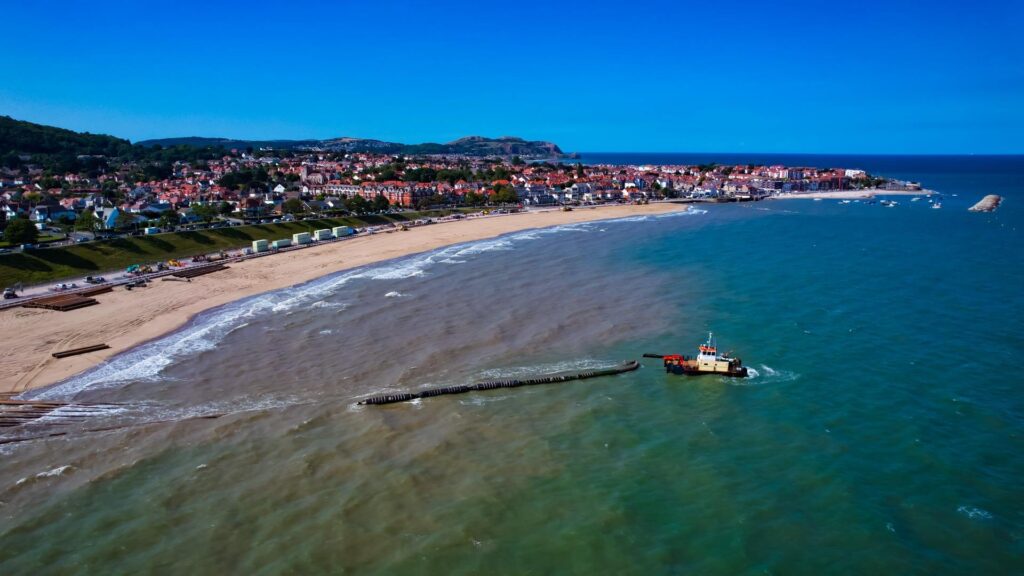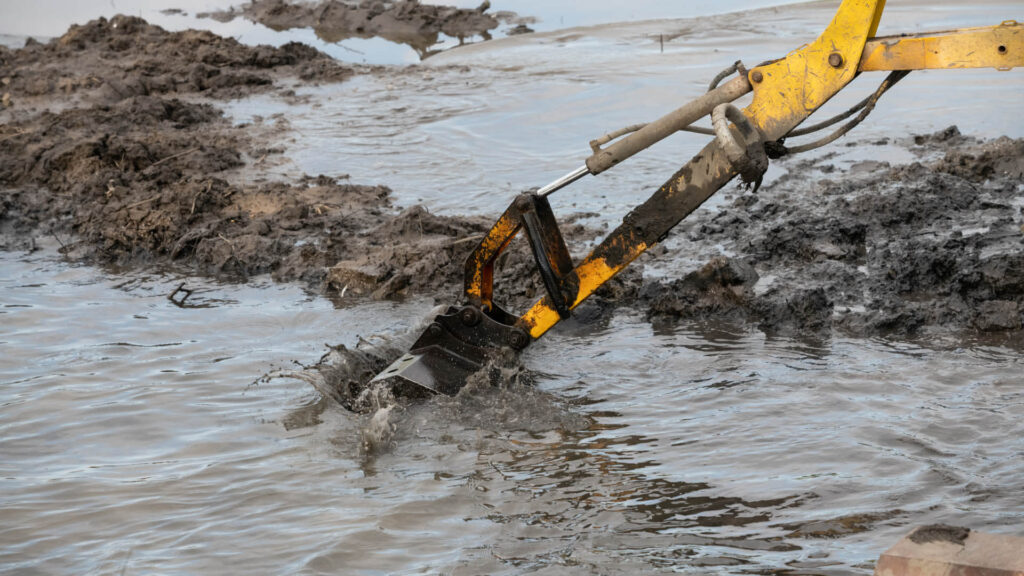Harbors are the lifeblood of global maritime trade, serving as essential hubs for the movement of goods and resources worldwide. These vital gateways play a pivotal role in economic development, connecting nations and enabling the seamless flow of international commerce. However, harbors’ efficiency depends on their ability to accommodate modern vessels and maintain navigable waterways, which is why harbor dredging becomes indispensable.
Harbor dredging involves removing sediment, debris, and other obstructions from the seabed to ensure safe and efficient port operations. This process supports larger ships and prevents delays that could disrupt trade. Specialized equipment, such as the harbor dredger, is used to carry out these critical tasks. By prioritizing dredging for harbor maintenance, nations can boost their economic resilience, foster trade growth, and safeguard their maritime infrastructure for future generations.
The Role of Harbors in Maritime Trade
Harbors play a critical role in global supply chains, acting as strategic nodes where goods are transferred between sea and land transportation. These hubs are vital for ensuring the smooth flow of raw materials, manufactured products, and essential commodities across the world. Their efficiency and accessibility are directly tied to the effectiveness of logistics operations, making them an indispensable part of international trade.
Well-functioning harbors are essential for trade efficiency. Regular maintenance, including harbor dredging, ensures that channels remain deep enough to accommodate modern vessels with increasing cargo capacities. Without such measures, sediment buildup can restrict navigation, leading to delays, higher shipping costs, and even the diversion of ships to alternative ports.
Harbor dredging deepens navigation routes and enhances the overall functionality of these maritime hubs. This process is carried out using specialized equipment, such as the harbor dredger, which is designed to remove accumulated sediment and debris effectively. A harbor dredger can operate in various environments, from shallow ports to deep-water terminals, ensuring that harbors remain fully operational.
However, many harbors face challenges keeping their waterways clear. Sediment from rivers, tidal flows, and human activities can accumulate quickly, threatening ports’ operational capacity. Without timely intervention, this can impact trade efficiency and economic growth. Implementing consistent dredging for harbor maintenance is crucial to mitigating these risks, supporting the growth of international trade, and ensuring that harbors remain reliable assets for maritime transportation.
What is Harbor Dredging?
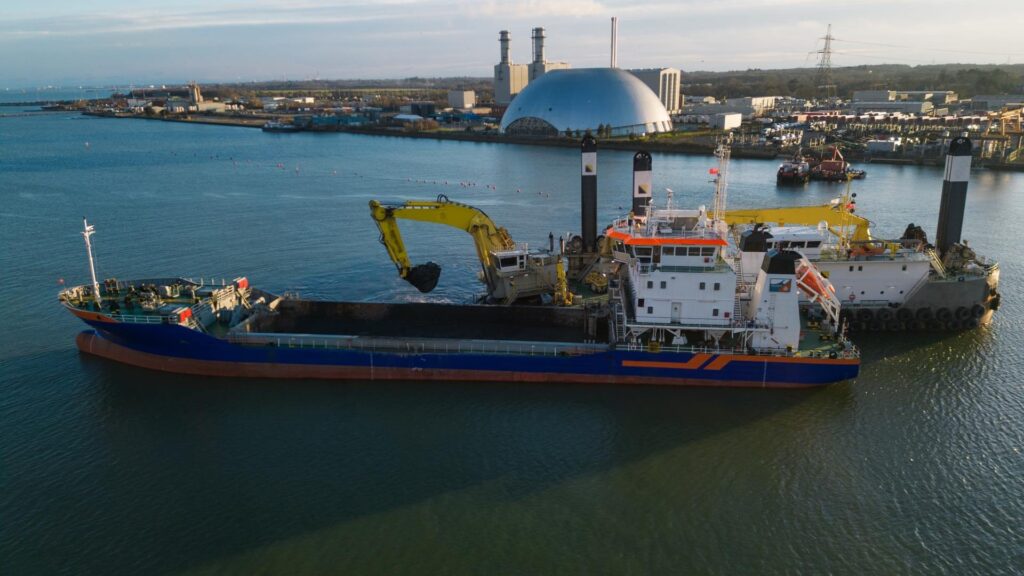
Harbor dredging is crucial for maintaining the functionality and efficiency of maritime ports. It involves removing sediment, debris, and other obstructions from the seabed to ensure that harbors remain deep enough to accommodate vessels of varying sizes. This process is essential for ensuring safe navigation, facilitating larger cargo ships, and supporting the economic viability of ports.
The tools and equipment used in harbor dredging are specialized to handle different environments and sediment conditions. A key piece of equipment is the harbor dredger, a machine designed to excavate and transport sediment from the harbor floor. Depending on the project requirements, dredgers can vary in size and functionality, ranging from cutter suction dredgers to trailing suction hopper dredgers. These tools play a critical role in maintaining navigable waterways.
Dredging for harbor maintenance’s primary objectives include deepening navigation channels, clearing accumulated sediment, and preventing the formation of shallow areas that could hinder ship movement. Without regular dredging, sediment buildup from rivers, tides, and human activities can compromise the efficiency and safety of port operations.
Dredging for harbor development also contributes to the expansion of existing infrastructure, allowing ports to handle larger ships and increasing their competitiveness. By investing in consistent harbor dredging practices, port authorities can ensure that harbors remain operational and capable of supporting global trade demands. This ongoing maintenance is vital for sustaining the economic and logistical roles of maritime ports worldwide.
The Economic Impact of Dredging on Harbor Development
Harbor dredging is an essential investment for ensuring that ports can accommodate larger vessels and meet the growing demands of global trade. With the advent of mega-ships carrying enormous cargo loads, many harbors require deeper navigation channels to stay competitive. By removing sediment and deepening waterways, harbor dredging allows these larger vessels to dock safely, significantly boosting trade capacity and revenue for port authorities.
Numerous case studies demonstrate the economic benefits of harbor dredging. For example, several major ports, such as the Port of Rotterdam, have undergone extensive dredging to increase their depth and capacity. These efforts have enabled them to attract larger ships and handle higher cargo volumes, driving economic growth for the region. Similarly, smaller ports that have invested in dredging for harbor development have seen increased trade traffic and new business opportunities.
While the upfront costs of harbor dredging and deploying specialized equipment like a harbor dredger can be significant, the long-term economic benefits far outweigh these expenses. Improved port capacity leads to more efficient trade operations, reduced shipping costs, and enhanced competitiveness in the global market. Furthermore, consistent maintenance using a harbor dredger prevents costly disruptions caused by sediment buildup, ensuring ports remain operational and reliable.
Ultimately, investing in dredging for harbor development is a strategic decision that strengthens a port’s role as an economic driver while safeguarding its future viability in the evolving landscape of maritime trade.
Environmental Considerations in Harbor Dredging
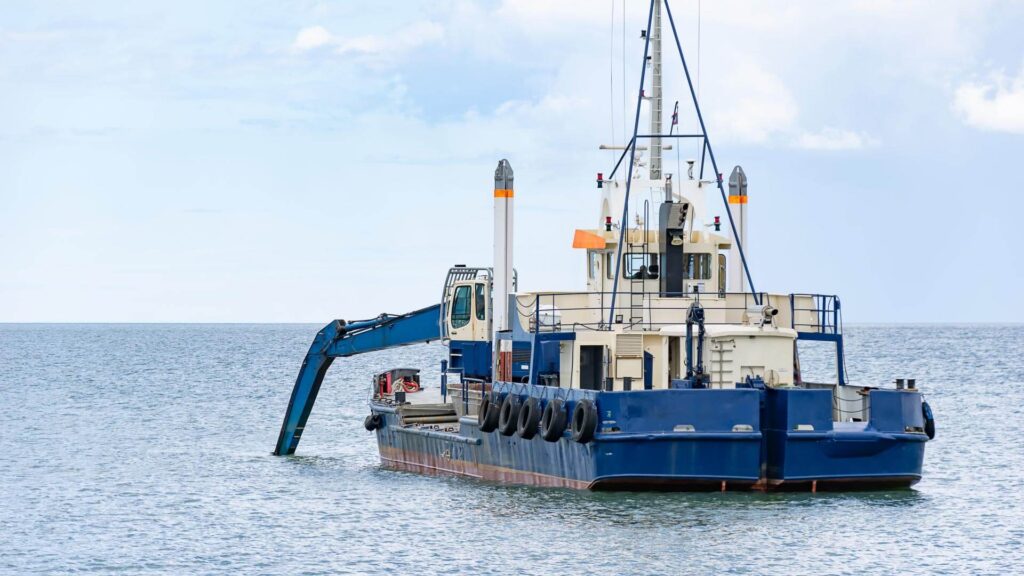
Harbor dredging is critical for maintaining navigable waterways and supporting economic growth, but it also raises important environmental considerations. The process can disrupt marine ecosystems by disturbing sediment, altering water quality, and affecting local habitats. Addressing these concerns is essential to ensuring that dredging activities balance economic needs with environmental stewardship.
Sustainable practices have become a cornerstone of modern harbor dredging efforts. Innovations in dredging technology now allow for more precise sediment removal, reducing the impact on surrounding ecosystems. For instance, specialized equipment like a harbor dredger is designed to minimize turbidity and sediment dispersion, protecting sensitive marine habitats during operations. Additionally, advanced methods, such as using dredged material for land reclamation or habitat restoration, help repurpose waste materials in an eco-friendly way.
Regulatory compliance plays a vital role in guiding sustainable dredging for harbor projects. Governments and environmental agencies enforce strict guidelines to monitor and mitigate potential ecological impacts. This includes conducting environmental impact assessments before initiating dredging activities, implementing measures to protect marine life, and continuously monitoring water quality.
By adopting environmentally conscious approaches, harbor dredging can support economic development while preserving marine ecosystems. Sustainable dredging for harbor maintenance ensures that ports remain operational without causing long-term harm to the environment, striking a critical balance between trade facilitation and ecological responsibility. These practices are vital for ensuring the future sustainability of global maritime operations.
Types of Harbor Dredging Projects
Harbor dredging projects can be broadly categorized into two types: maintenance and capital. Maintenance dredging involves the routine removal of sediment and debris to ensure that existing waterways remain navigable and operational. This type of dredging is crucial for preventing sediment buildup that could hinder ship movement or reduce a port’s capacity. In contrast, capital dredging focuses on expanding or creating new waterways, increasing a harbor’s depth and width to accommodate larger vessels and boost trade capacity.
Different types of projects require specialized equipment to achieve optimal results. A harbor dredger is designed to handle various dredging tasks, depending on the scope and objectives of the project. For example, cutter suction dredgers are ideal for breaking up compacted sediment during capital dredging, while trailing suction hopper dredgers excel at efficiently removing loose sediment during maintenance operations.
Numerous examples highlight the importance of harbor dredging for both expansion and restoration. In port expansion projects, dredging allows harbors to handle larger vessels, increasing their competitiveness in global trade. Restoration projects, on the other hand, focus on rejuvenating underperforming harbors by clearing obstructions and restoring depth, ensuring these facilities remain viable economic assets.
By investing in dredging for harbor maintenance and expansion, ports can secure their role in the maritime supply chain, ensuring long-term operational efficiency and economic growth while adapting to the evolving demands of international trade.
Technological Innovations in Harbor Dredging
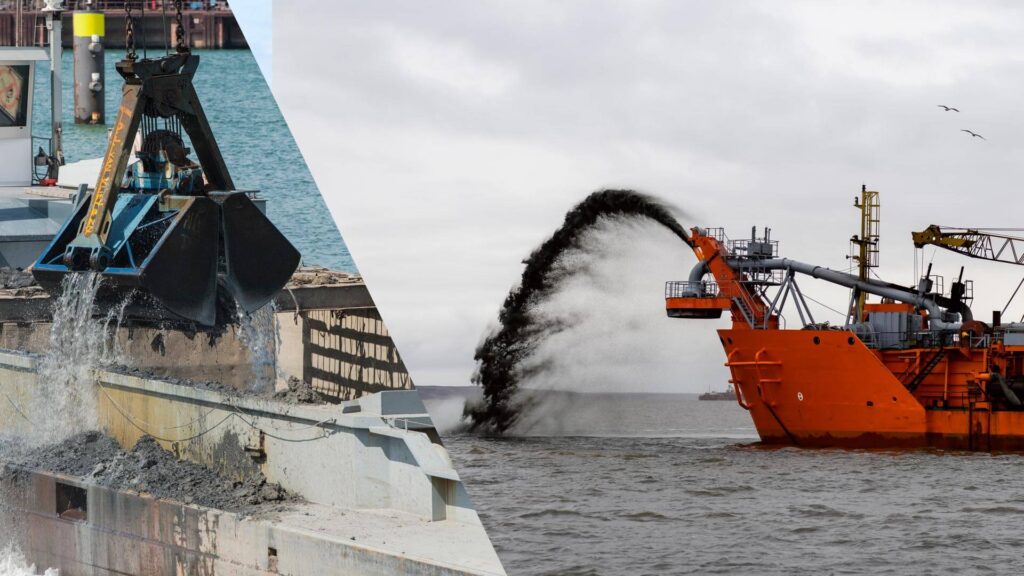
The field of harbor dredging has significantly advanced in recent years. Modern techniques and equipment are revolutionizing how ports maintain and expand their operations. These innovations enhance efficiency and reduce environmental impact, making dredging projects more sustainable and effective.
One of the most notable developments in harbor dredging is the integration of cutting-edge technology into dredging equipment. For instance, GPS systems and real-time data monitoring allow operators to target areas requiring dredging precisely. This minimizes unnecessary sediment removal, reduces environmental disruption, and optimizes resource use. Equipment like the harbor dredger is now equipped with advanced sensors and control systems that enable greater accuracy and efficiency during operations.
Data-driven approaches have also become a key component in harbor maintenance dredging. Predictive modeling tools analyze sediment deposition patterns, helping port authorities plan proactive dredging schedules. By understanding sediment movement and its impact on navigational channels, ports can implement cost-effective and environmentally friendly dredging strategies.
Looking to the future, harbor dredger design is set to evolve further with an emphasis on automation and green technology. Autonomous dredging equipment powered by AI is being developed to increase operational efficiency and reduce human intervention. Additionally, innovations in energy-efficient machinery and the use of renewable power sources aim to lower the carbon footprint of dredging operations.
These technological advancements ensure that harbor dredging remains a vital and sustainable practice. By leveraging modern tools and techniques, ports can maintain their competitiveness in global trade while addressing environmental and economic challenges. Embracing these innovations is essential for the long-term success of dredging for harbor development and maintenance projects.
Challenges in Dredging for Harbors
Harbor dredging is vital for maintaining and expanding port operations. However, several challenges can complicate large-scale projects. These obstacles often require strategic planning and innovative solutions to ensure the success of dredging initiatives.
One significant challenge in harbor dredging is the logistical complexity of large-scale operations. Coordinating the movement of vessels, managing dredged material disposal, and ensuring minimal disruption to port activities demand meticulous planning. Large-scale projects often require extensive resources, including multiple types of equipment like the harbor dredger, as well as skilled personnel to operate and oversee the work. Delays or inefficiencies in any of these areas can escalate costs and extend timelines.
Community concerns also play a critical role in the success of dredging projects. Local communities often voice worries about the environmental and social impact of dredging for harbor development. These include potential disruptions to marine ecosystems, water quality, and nearby habitats. Balancing these concerns with the economic benefits of harbor dredging requires transparent communication, stakeholder engagement, and adherence to environmental regulations.
A notable case study highlights the challenges and solutions in a significant harbor dredging project at the Port of Savannah, USA. Faced with sediment buildup restricting access for larger vessels, the project involved extensive planning to address environmental concerns while deploying advanced harbor dredger technology to expedite the process. By engaging the community and implementing sustainable practices, the port completed the project, improving its capacity and competitiveness.
Addressing these challenges requires a combination of innovative technology, effective communication, and sustainable practices to ensure harbor dredging continues to support global trade while mitigating its potential drawbacks.
Conclusion: The Way Forward
Harbor dredging remains a cornerstone of maritime trade. It ensures that ports can accommodate modern vessels and support global commerce. By maintaining navigable waterways and expanding port capacities, this process plays a vital role in economic development and the seamless flow of goods. However, the success of harbor dredging depends on adopting sustainable and innovative practices that minimize environmental impact.
Proactive maintenance and investment in modern equipment, such as the harbor dredger, are essential for meeting the growing demands of international trade. Ports must prioritize strategic dredging for harbor projects to enhance their competitiveness while addressing community and ecological concerns.
Looking ahead, advancements in dredging technology, including automation and environmentally friendly designs, promise a more efficient and sustainable future. By embracing these innovations, the maritime industry can ensure that harbor dredging continues to support economic growth while preserving marine ecosystems for generations to come.



